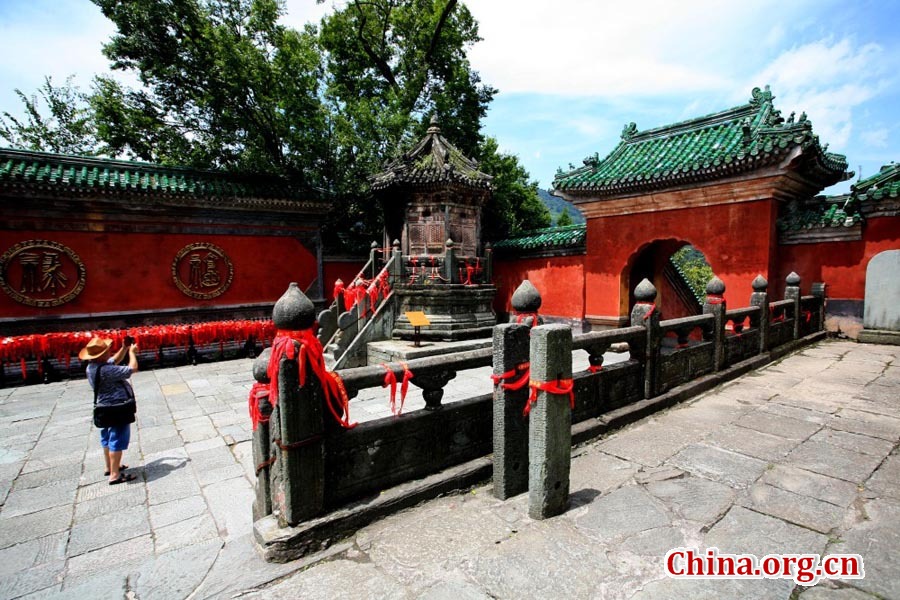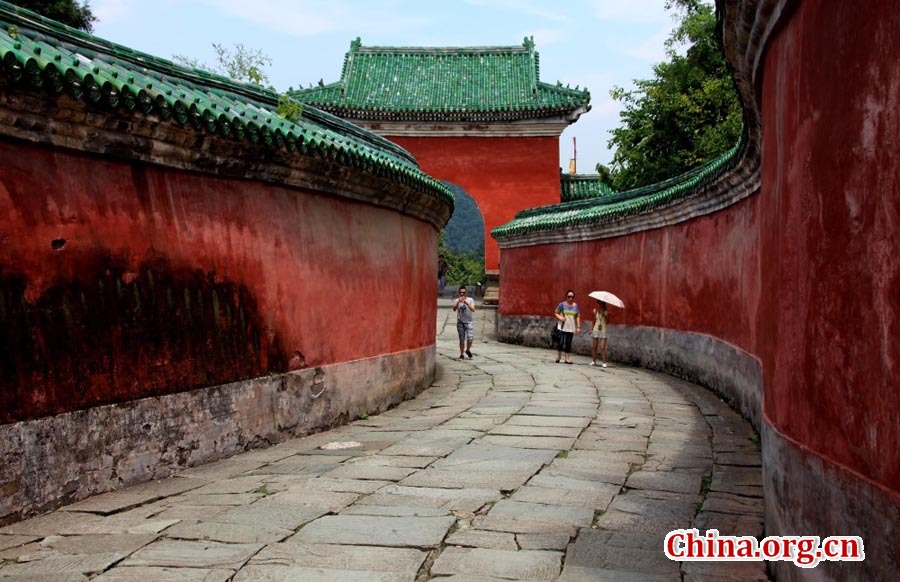
Wudang Mountain, in the northwest of Hubei province, is perhaps the best known of China's Taoist holy mountains. It was listed by UNESCO as a World Cultural Heritage Site in 1994. The mountain has several main tourist attractions, covering an area of 300 square kilometers. From afar, the scenery resembles a beautiful, traditional Chinese landscape painting. [Photo/China.org.cn]

A sprawling ancient building complex in the Wudang Mountain was founded in the heyday of the Tang Dynasty (AD 618-907), but reached its zenith during the Ming Dynasty, when Emperor Zhudi sent some 300,000 workers in 1412 who spent 12 years to finish the sacred site. [Photo/China.org.cn]

In the late period of the Easten Han Dynasty (25-220), Taoism was born and Wudang Mountain was respectedas the immortal mountain of Taoism . Besides the elegant natural sceneries, the ancient architectures are magnificent. [Photo/China.org.cn]

The mountain has several main tourist attractions, covering an area of 300 square kilometers. From afar, the scenery resembles a beautiful, traditional Chinese landscape painting. [Photo/China.org.cn]
